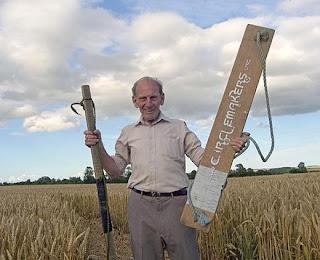Layout















A World-renowned Czech architect born 18th April 1937, he spent a significant part of his life in the United Kingdom. He was the leading architect behind the innovative design office, Future Systems. Kaplicky was best known for the futuristic Selfridges building in Birmingham, and the Media Centre at Lords Cricket Ground in London.
Awards and Prizes
Stirling Prize (1999)
World Architecture Awards (2001)
Royal Institute of British Architects Award for Architecture (2004)
Signage
Information on Jan Kaplicky was placed at the entrance for visitors to read before they made their way around the exhibition, it was presented on white vinyl. It was clearly visible and very easy to read. The model names and information was typed out onto black blocks and stuck next to the pieces that were being exhibited, this method was also used to describe the photos on the wall too. If a model needed some extra information, this was typed out in black onto transparent vinyl and stuck onto the display cases.
How could it be better?
There wasn’t a huge amount of information on Kaplicky and his works. I received a small booklet at the ticket office, which contained very limited information and wasn’t much use to me. A hand out that goes into more detail of the models on display would have been very useful as well.
Labeling
All the labels were very clear and easy to read, they stood out as they were on black mounting in a very white room, clear room. The labels were at the bottom of the models which meant having to lean down to see them, this was a good thing as it meant I was also looking at the structures of the models in more detail. It made me notice the little man falling off the bridge, I wasn’t sure if this was something Jan himself had done or if it was a joke by someone that works at the museum, either way without the labelling being placed there I would have never had noticed small things such as that.
Publicity
I found out about the exhibition via a search engine when typing in my interests on the type of exhibition I would like to visit. I hadn’t seen any information or advertisements about it before hand. I contacted some friends who study architecture to see if they had heard about it and they also hadn’t. This shows that the exhibition wasn’t well advertised unless you are a frequent visitor to The Design Museum.
Technology
The only piece of technology that had been used as part of the exhibition were the TVs mounted onto the wall going through a slide show of Kaplickys work. As there wasn’t much technology being used the wouldn’t of been a worry for having a large amount of plug sockets.